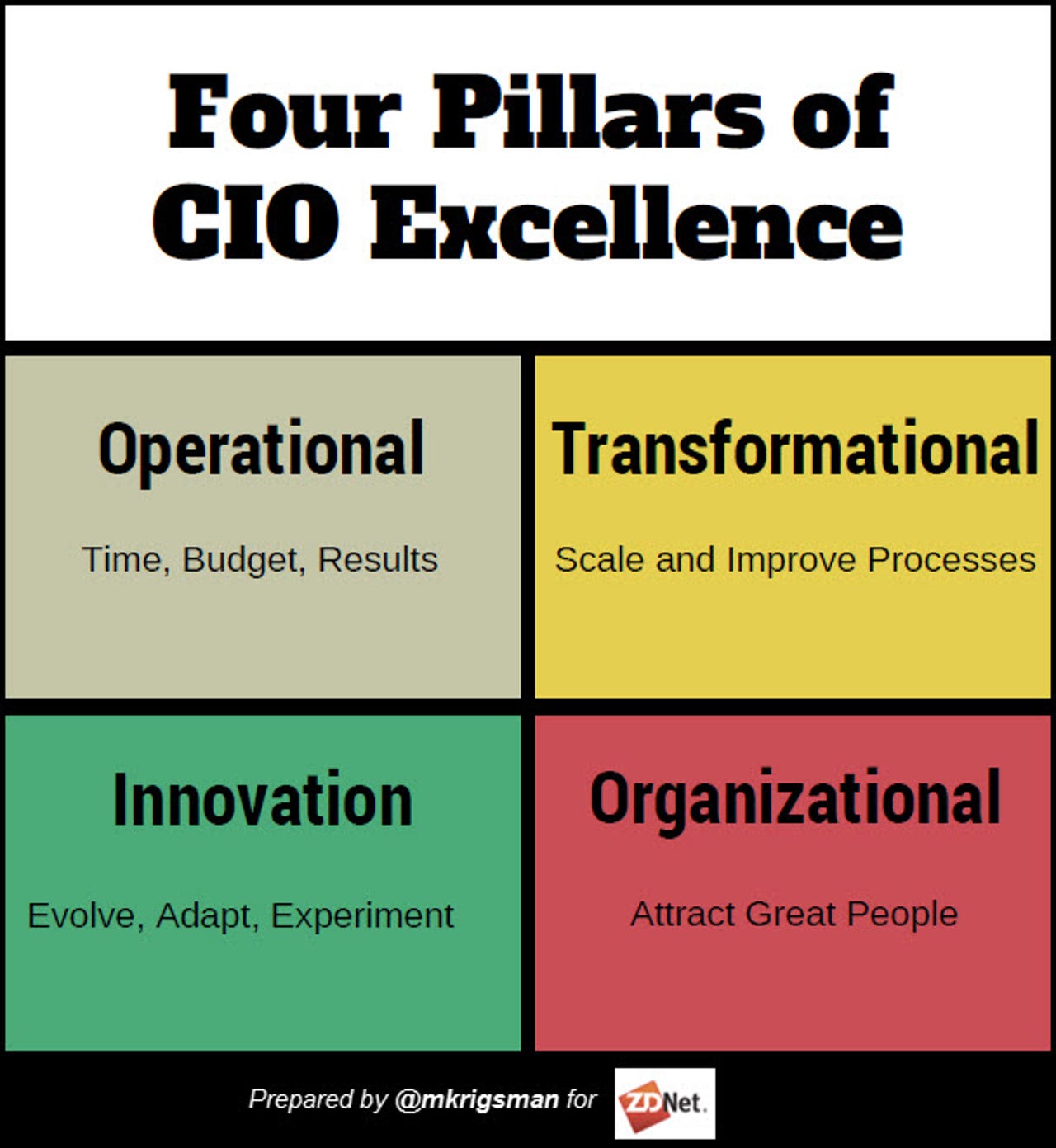CIO as business strategist: Managing the uneasy tension

The Chief Information Officer role is fraught with difficulty because it sits at the uneasy intersection of technology constraints and business demands. In many companies, both IT and business units are still trying to become comfortable with the idea of CIO as business strategist.
During a conversation on the CXO-Talk show, the CIO of data center provider Equinix, Brian Lillie, presents advice on how to manage the tensions. Lillie's advice centers on four pillars through which IT can achieve business value for the organization.
You can watch the entire conversation here:
Lillie begins with operational excellence, which means successfully, delivering the nuts and bolts of traditional IT. As he describes it, "sustaining operations is job one and you know we have to do that first and foremost. "

The foundation of operational excellence demands that IT deliver projects on time, meet core infrastructure needs, and provide sufficiently high levels of service to stakeholders. Intel's CIO, Kim S. Stevenson, describes this level of operational excellence as being "table stakes" for a modern CIO.
Moving past the basics, Lillie advocates transformational excellence, which he defines as "transforming business process and business systems to support a scaling, growing global company." In other words, putting primary systems into place is the foundation that gives IT a platform on which to drive business change. Once IT has systems in place to deliver core requirements successfully, it can turn attention to helping the company adapt and grow.
Beyond evolving processes for efficiency and growth, the next phase is innovation excellence. Lillie describes as innovation excellence as a mindset, rather an organizational mandate:
Innovation is in our blood. I'm not a believer that you set aside an innovation team and what they do is innovation. It's more of a mindset. The structural piece says, 'How do I create an environment where people can innovate, and not fear failure and not think that everything has to be 100% focused on a particular deliverable when we are trying something new.'
Finally, Lillie talks about people or organizational excellence. The ability to attract good peoples relies on having an underlying foundation of operational excellence, being able to adapt (transformational excellence), and maintaining a strong vision for the future (innovation excellence).
Organizational excellence is necessary because:
Good people want to work in a place where there are surrounded by other good people, and they get to work on cool stuff, and they get to innovate. And, they get to feel like one person can make a difference. Talent is everywhere and you've got to go and find it and inspire it
As we spoke, Lillie reiterated the importance of creating a culture that supports innovation and new ideas. He suggests setting aside "money for new ideas:"
Set aside some time for some of your people to work in areas that there is not necessarily an application fit today, but could be some relevance to where you're going.
The bottom line is recognizing the CIO job as a business leadership function rather than a technology support role. The idea of IT as a somehow separate from any other part of the enterprise is an outdated, outmoded, lingering attribute of the past. The foundation of CIO success lies in bringing this business perspective to every aspect of IT.
- - -
CXO-Talk brings together prominent executives, authors, and analysts to discuss leadership, transformation, and innovation. Join me and Vala Afshar every Friday for a new episode of CXO-Talk.